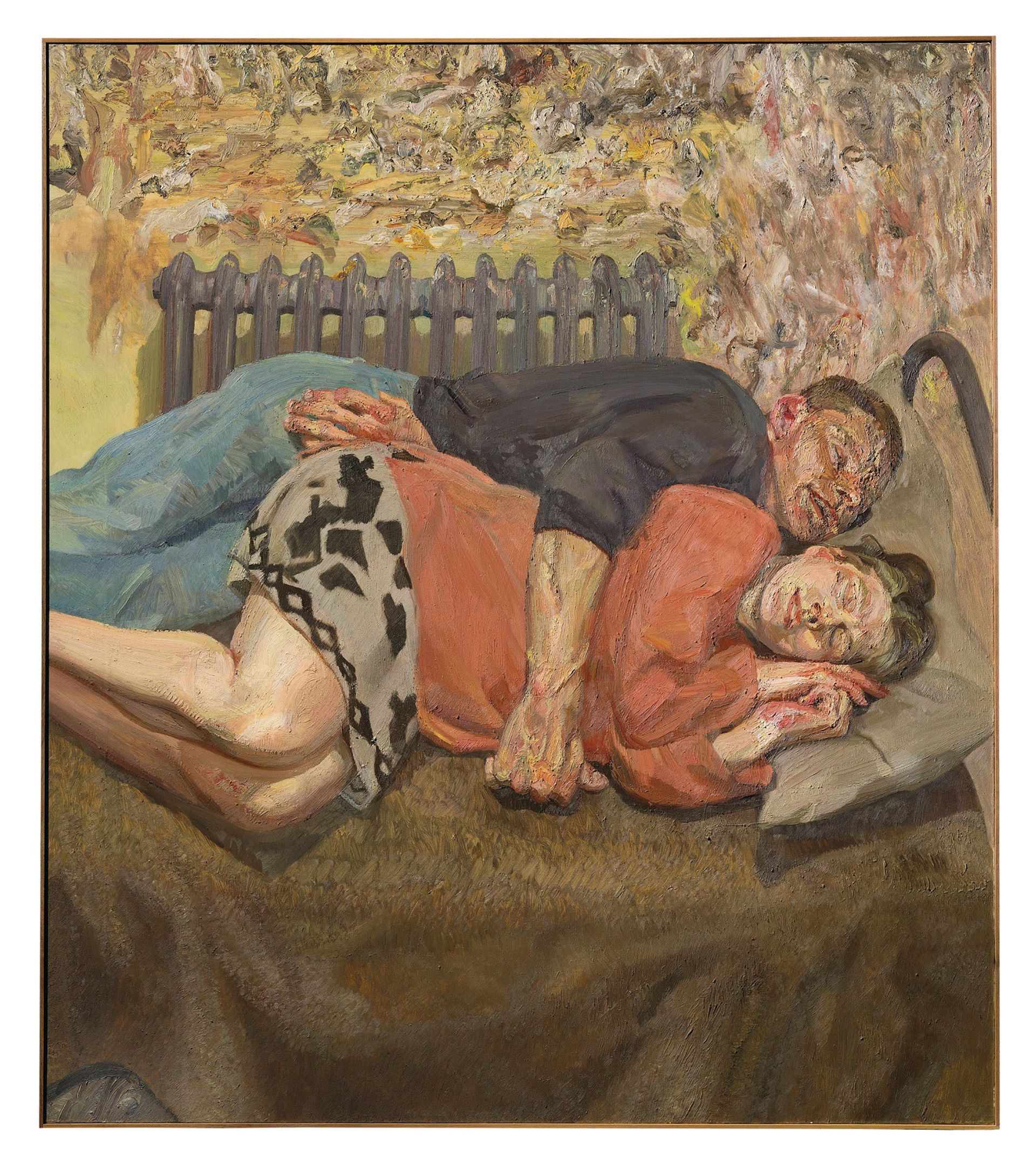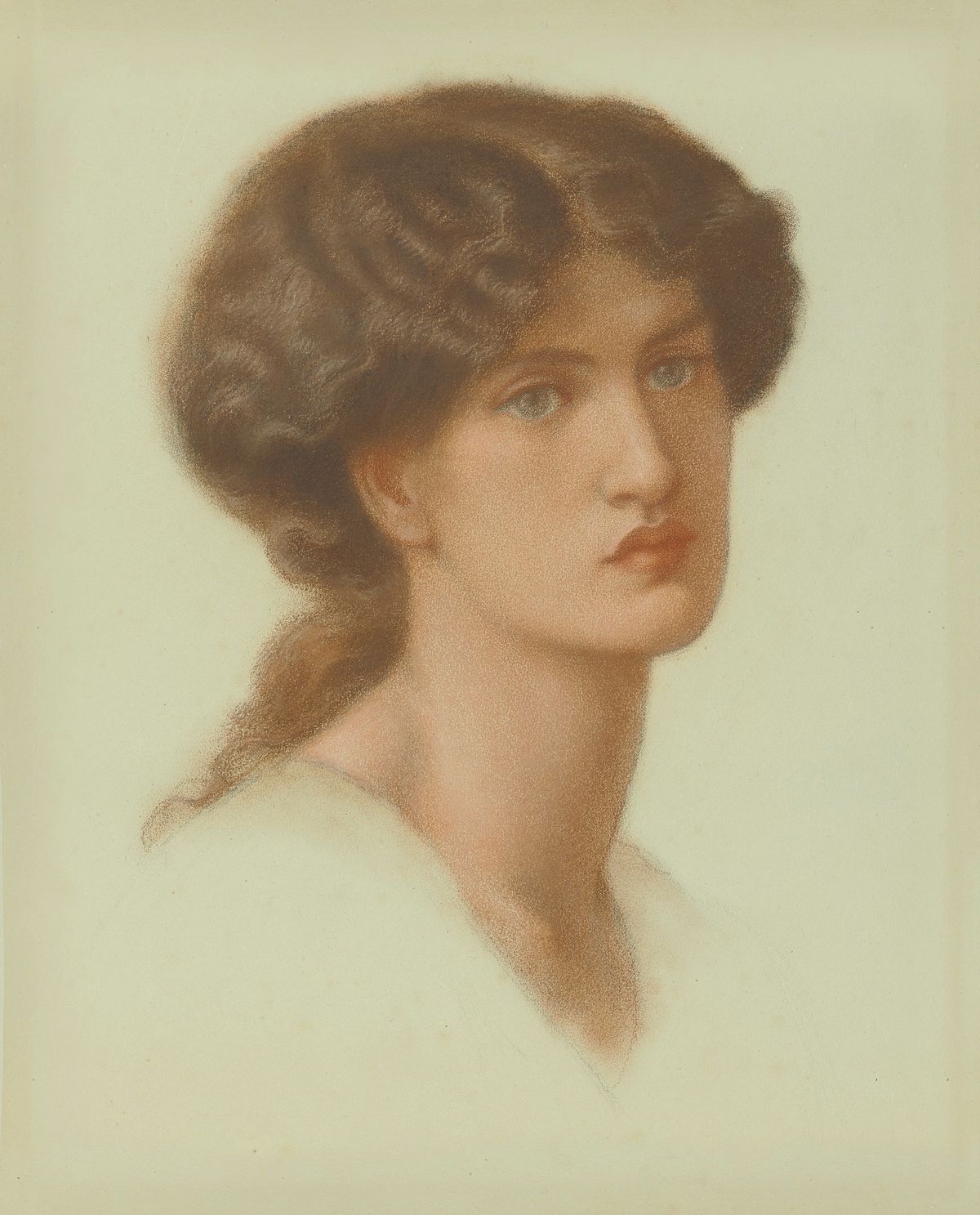Dante Gabriel Rossetti, Portrait of Jane Morris (around 1870) Estimate £300,000-£500,000 (sold for £602,500 with premium)
As befits Christie’s 250th anniversary auction, this coloured chalk study pulls together several strands of British art history. Rossetti, the founder of the Pre-Raphaelite Brotherhood, depicts his long-time muse Jane Morris, the wife of the Arts and Crafts champion William Morris, in a portrait that later belonged to L.S. Lowry. The painter of industrial Britain owned at least 16 works by Rossetti, including two of his “stunners”, Proserpine and Pandora, for which Jane Morris also modelled. He bought them both at Christie’s. Such was his obsession, Lowry confessed in a 1960s interview to having “nightmares sometimes that Christie’s are going to hold an entire sale of Rossettis”. Defining British Art also includes a work of Lowry’s, Industrial Scene (1951), which is estimated to sell for between £1.5m and £2.5m.

Lucian Freud, Ib and Her Husband (1992) Estimate in the region of £18m (unsold)
One of the most recent works in the sale is Lucian Freud’s tender oil painting of his daughter Ib (Isobel Boyt) and her husband Pat Costelloe. Freud’s unflinching but affectionate paintings of his daughters speak volumes about their family relationships. In Ib’s case, he was absent through most of her childhood, only growing closer to her later in life, when this work was painted. Ib and Her Husband passed through the Acquavella Gallery in New York to a Washington collection and was bought by the present owner at Christie’s in New York in 2007 for $19.4m (with premium), then an auction record for the artist. The painting also appeared in the travelling retrospective Lucian Freud: Recent Work at London’s Whitechapel Gallery, New York’s Metropolitan Museum of Art and Madrid’s Reina Sofia in 1993-94.

Frederic Leighton, Golden Hours (1864) Estimate £3m-£5m (sold for £3.3m with premium)
While the presence of Modern works by Lucian Freud and Francis Bacon in the sale injects some gritty British realism, this oil on canvas by Lord Leighton from a century earlier is an unabashedly beautiful example of British Aestheticism. Golden Hours is also clearly influenced by 16th-century Venetian art—the bearded man would fit seamlessly into a Giorgione painting. Viewed from behind while leaning over the piano, the female figure recalls Vermeer’s A Lady at the Virginals with a Gentleman (early 1660s), which Leighton may have seen in the Royal Collection. Golden Hours is now coming to auction for the first time in a century, having last been sold at Christie’s for 260 guineas in 1916. The painting was first shown in the 1864 summer exhibition at London’s Royal Academy of Arts, where it returned for its last public appearance in the Leighton survey of 1996.


